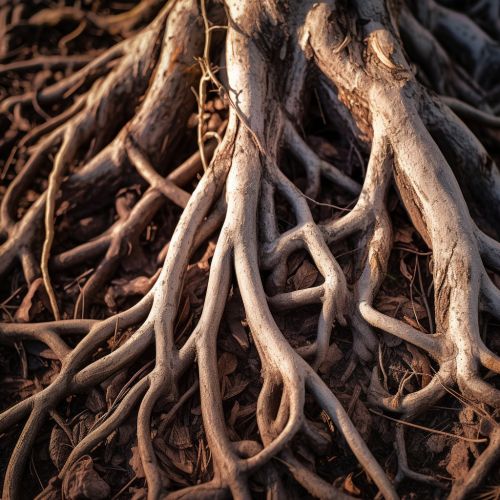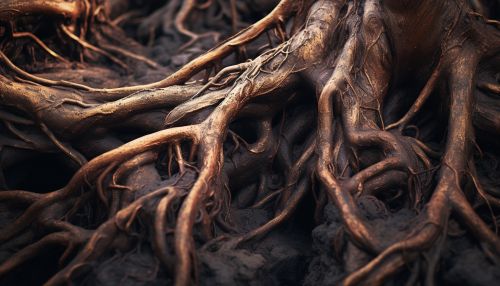Root
Definition
A root is the part of a plant that typically lies below the surface of the soil. However, roots can also be aerial or aerating, that is, growing up above the ground or especially above water. This organ serves several key roles in the life of a plant. These include absorption of water and inorganic nutrients, anchoring of the plant body to the ground, and storing food and nutrients. The root system also plays a role in vegetative reproduction and competition with other plants.


Structure and Growth
The structure of a root allows it to perform its primary functions. The root is typically divided into several zones: the root cap, the apical meristem, the elongation zone, and the hair zone. The root cap protects the growing tip in plants. It secretes mucilage to ease the movement of the root through soil, and may also have a role in communication with the soil microbiota. The apical meristem produces new cells for root growth. The elongation zone is where newly formed cells increase in length, thereby pushing the root tip forward in the growing medium. Finally, the root hair zone is where most water and nutrient absorption occurs.
Types of Root Systems
There are two main types of root systems: taproot systems and fibrous root systems. A taproot system is one in which the primary root becomes the dominant root with the other roots forming a secondary system. This type of root system is common in dicotyledonous plants. A fibrous root system, on the other hand, is a network of roots with similar sizes. This type of root system is common in monocotyledonous plants.
Root Functions
The primary functions of the root system are absorption, conduction, and storage. The root system absorbs water and mineral nutrients from the soil and conducts them to the stem. It also stores food reserves, particularly in biennial plants, where the first year's growth is stored to provide for the second year's growth.
Root Adaptations
Roots have developed several adaptations to deal with different environments. For example, some roots are capable of asexual reproduction, while others have developed specialized structures to store nutrients or to provide support. Some plants have also developed roots that can perform photosynthesis, while others have developed roots that can absorb moisture from the air.
Root Diseases and Pests
Roots are susceptible to a variety of diseases and pests. These can include root rot, nematodes, and various types of fungi. These diseases and pests can cause significant damage to the root system, and by extension, the entire plant.
Root in Human Culture
Roots have a significant place in human culture, particularly in terms of their use in cooking and medicine. Many plants with edible roots have been cultivated for thousands of years, while others are used in traditional medicine.
